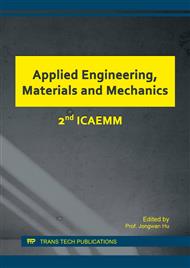p.3
p.8
p.14
p.19
p.25
p.30
p.38
p.43
Surface Layer Damage of Quartz Glass Induced by Ultra-Precision Grinding with Different Grit Size
Abstract:
Quartz glass is a typical hard and brittle material. During the manufacturing process of quartz glass components, ultra-precision grinding is widely used due to its high throughput and good dimensional accuracies. However, grinding will unavoidably induce large surface and subsurface damage. In this study, the surface and subsurface damage characteristics of quartz glass substrates ground by diamond wheels with different grit sizes were investigated in terms of surface roughness, surface topography, subsurface microcrack characteristic, and subsurface damage depth. Discussion was also provided to explore corresponding reasons of surface and subsurface damage induced by diamond grinding wheels with different grit sizes of #1500 and #2000. The experiment results showed that the surface roughness, surface damage, and subsurface damage depth induced by #2000 quartz glass was ground by #1500 diamond grinding wheel, and in ductile mode when ground by #2000 diamond grinding wheel.
Info:
Periodical:
Pages:
19-24
Citation:
Online since:
October 2017
Authors:
Keywords:
Price:
Сopyright:
© 2017 Trans Tech Publications Ltd. All Rights Reserved
Share:
Citation:


